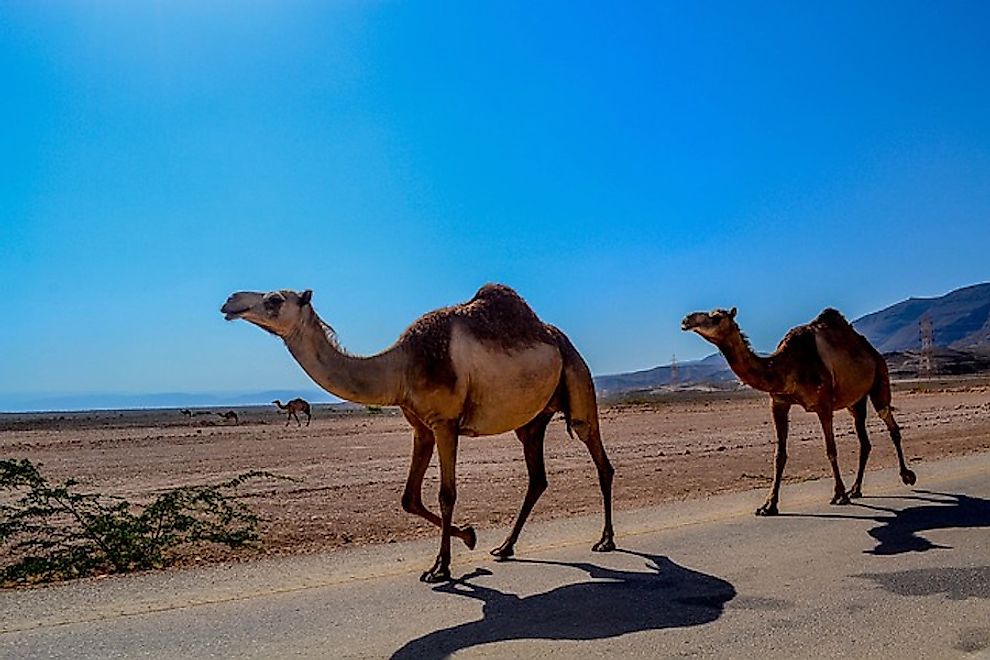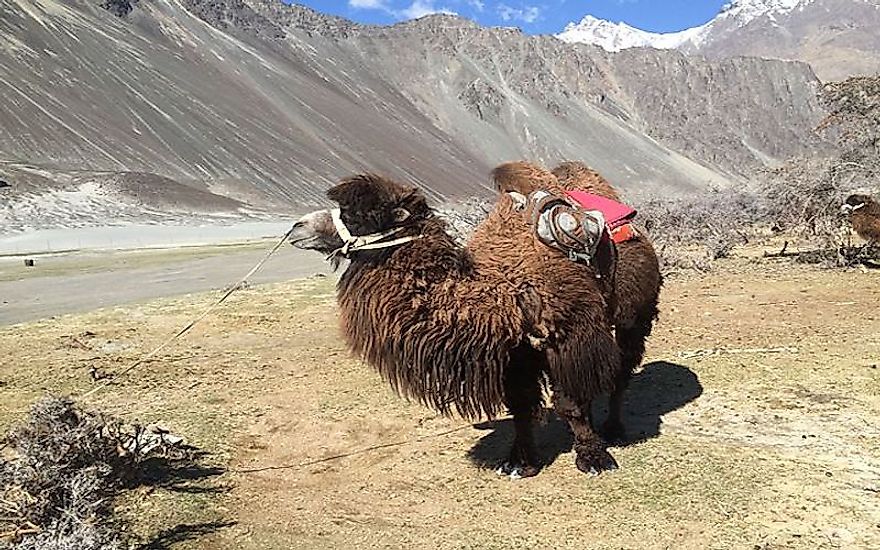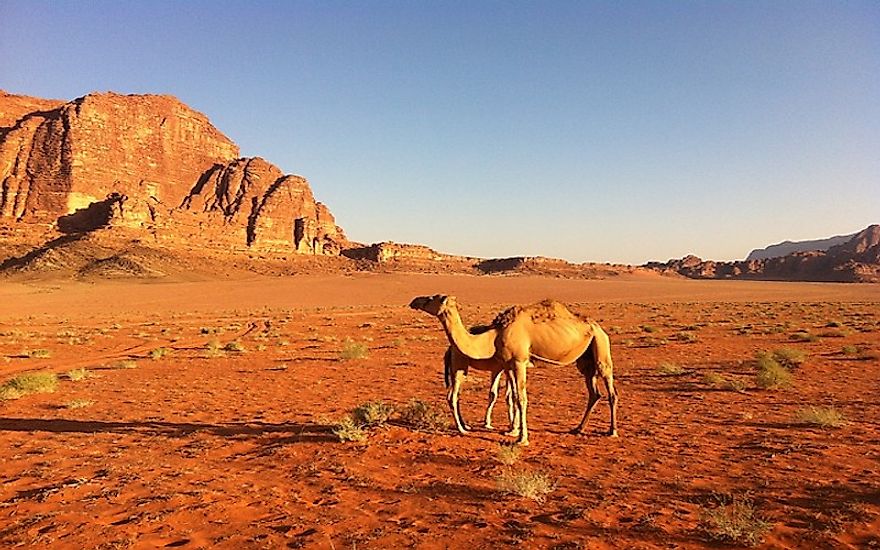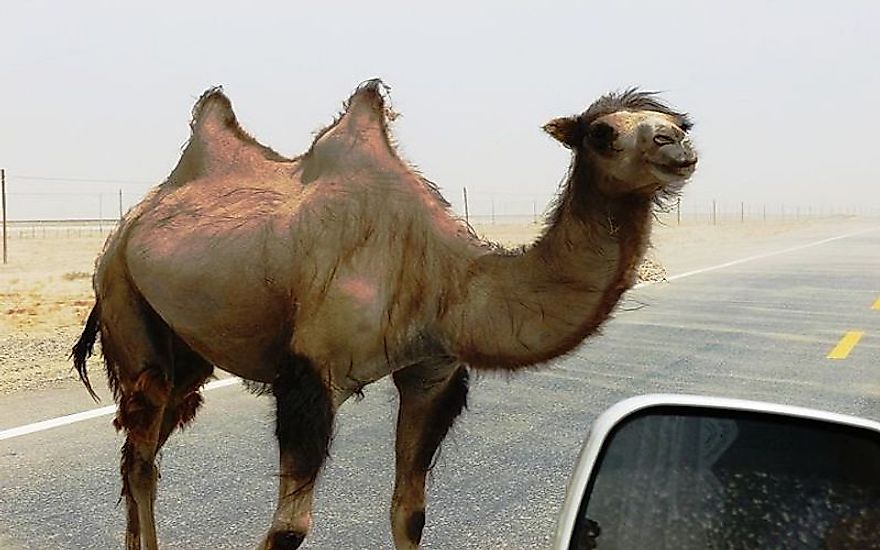How Many Types Of Camels Live In The World Today?

Often referred to as the “ship of the desert,” a camel, an even-toed unngulate belongs to the Camelus genus and carry a distinctive “hump” on its back. These animals are designed by nature to survive in the harsh arid and semi-arid climates where they live. There are currently three extant species of camels living in the world of which two are domesticated species (dromedary camel, and domesticated Bactrian camel) and one is wild (wild Bactrian camel). The wild species is on the verge of extinction. Here we enlist these species of camels and the special features associated with them.
3. Bactrian Camel

The Bactrian camel (Camelus bactrianus) is an extant species of camel that lives in the Central Asian steppes. The name of the species is derived from Bactria, a historical region in Central Asia. The camel has two humps on its back, the most notable feature that distinguishes the species from the dromedary camel. The bactrian camel has a population of about 2 million, existing primarily in the domesticated form.
The Bactrian camel is the biggest animal in its native range. The largest living camel species, the Bactrian camel has a length of 220 to 350 cm from head to body, and a tail length of 35 to 55 cm. These camels weigh between 300 and 1,000 kg. Their coat color varies from sandy beige to dark brown. The coat is wooly with a long-haired mane and bear on the neck and throat. The humps of the camel store fat for use in times of low food supply. The eyelashes are long and the nostrils are sealable to protect the creature from desert sand storms. The feet are tough and wide to allow easy walking on the desert landscape.
The Bactrian camels are migratory in nature and they are found in a wide variety of habitats including flat, arid deserts, sand dunes, rocky mountains, and stony plains. The camels are highly adapted to survive extremes of temperatures from blistering heat to freezing cold. The camels have a diurnal feeding habit and are primarily herbivorous. They can consume dry, salty, bitter, and prickly plants quite easily. When food resources are scarce, the camels might feed on carcasses or anything that is available easily.
The camels play an important role in the life of the desert people. They were possibly domesticated sometime prior to 2500 BCE and continue to be used as a beast of burden and a significant mode of transport in the desert.
2. Dromedary Camel

The dromedary camel or the Arabian (Camelus dromedarius) is a camel species with a single hump, distinguishing it from the double-humped Bactrian camel. This is the smallest of the three extant camel species. Males typically weigh about 400 to 600 kg while females weigh between 300 and 540 kg. The narrow chest, single hump, long, curved neck, and long hairs on hump, shoulders, and throat are the important characteristic features of the camel. The coat color ranges from brown to black to even white.
The camels live in herds of about 20 individuals and a dominant male leads the herd. The diurnal species feed on desert vegetation and can live without water for days. The dromedaries have not occurred in the wild for over 2,000 years. They once roamed across the deserts of Arabian Peninsula and southern Asia. Today, the domesticated dromedary camels mainly live in the semi-arid and arid habitats of Africa, Asia, and Australia. Australia has a significant feral population of this species. Africa hosts nearly 80% of the dromedary population of the world. Meat and milk of the camels are important to the people of the desert. The camels are also used as beasts of burden.
1. Wild Bactrian Camel

The wild Bactrian camel (Camelus ferus) is a close relative of the domesticated Bactrian camel. The species is native to the Central Asian steppes and have a double hump. Until recently, it was believed that wild Bactrian camels had descended from the domesticated species that became feral after escaping captivity. However, a more recent analysis of mitochondrial DNA of the two species suggests a divergence about 0.7 to 1.5 million years ago, much before domestication took place. The wild Bactrian camel is today classified as a critically endangered species with a small population restricted to the remote and wild regions of the Taklamakan and Gobi Deserts.
Within their limited range, the wild Bactrian camels are found in arid plains and hills, and feed on shrubs as their primary food source. The camels wander in groups of 2 to 100 for long distances in search of food and water. These camels face a number of threats including hunting. Many are poached for meat. Land mines laid in the salt springs also kills the camels. Attacks by wolves, hybridization with domesticated Bactrian camels, and lack of access to oases water sources due to human interference, etc., are some of the other significant threats faced by these wild camels.











